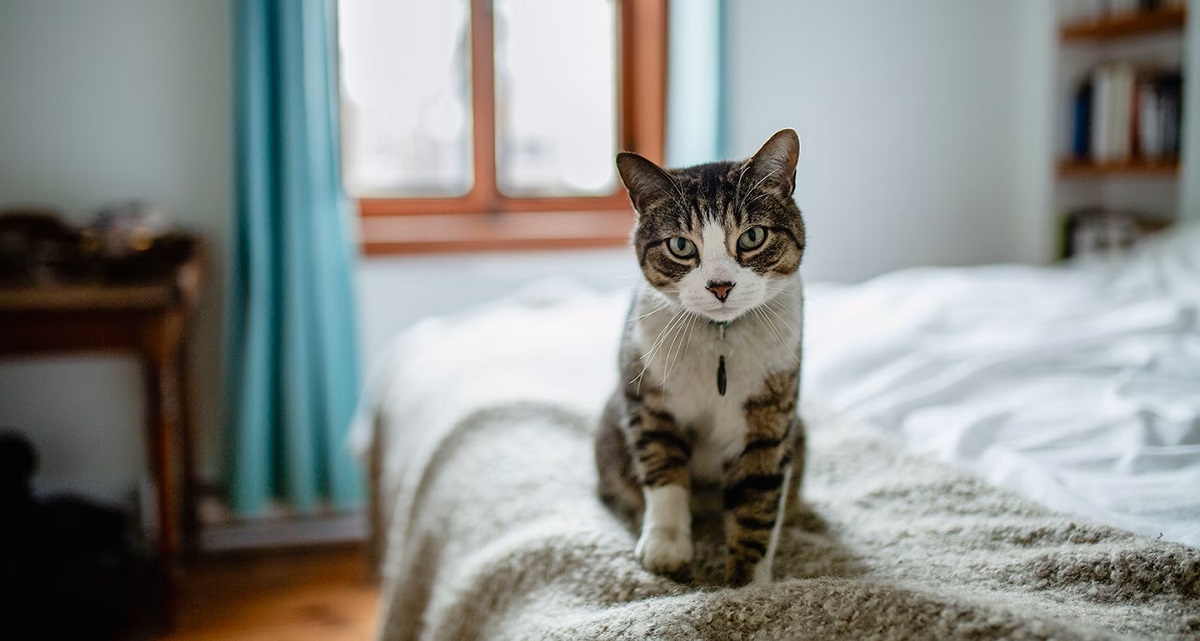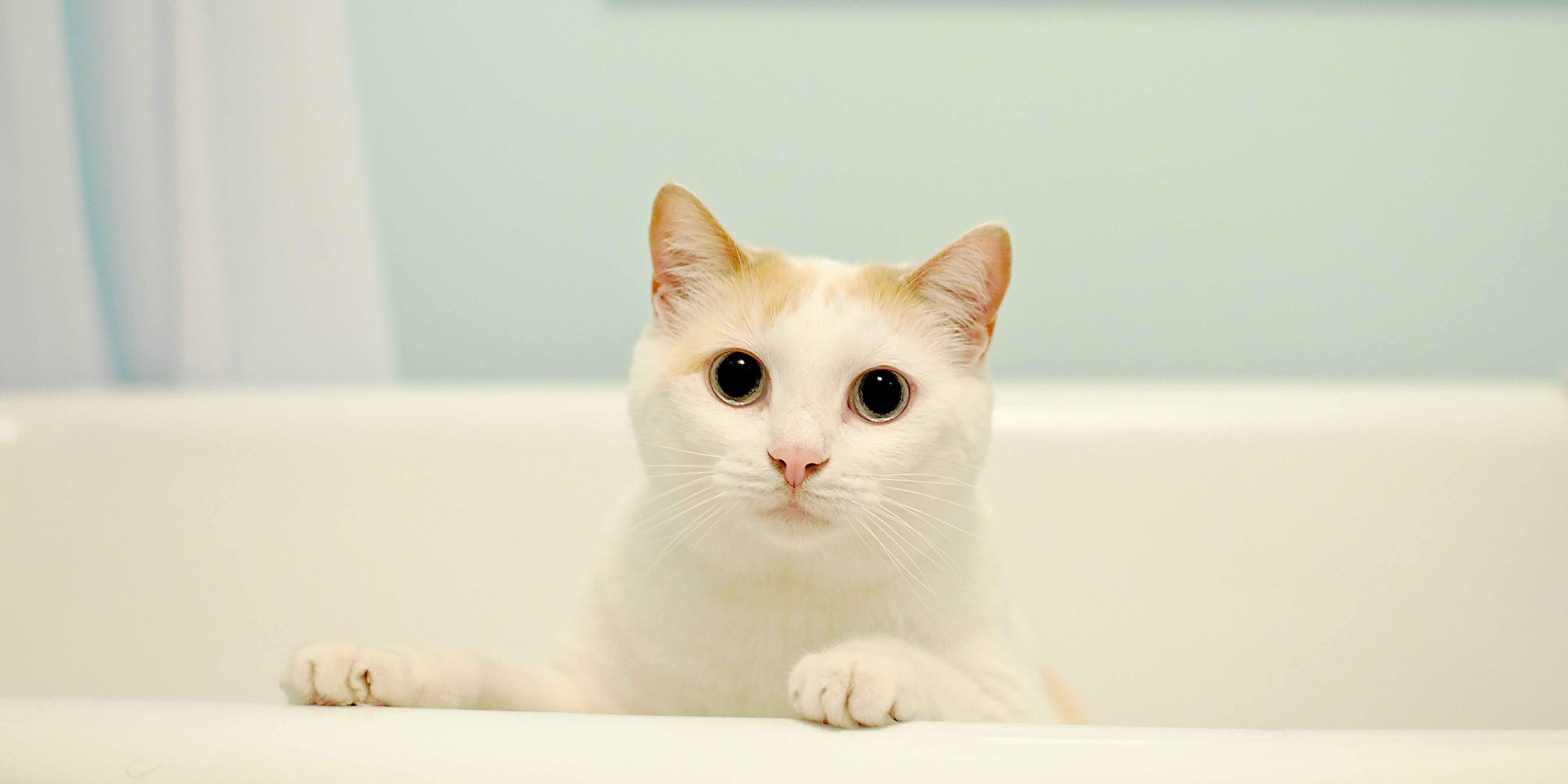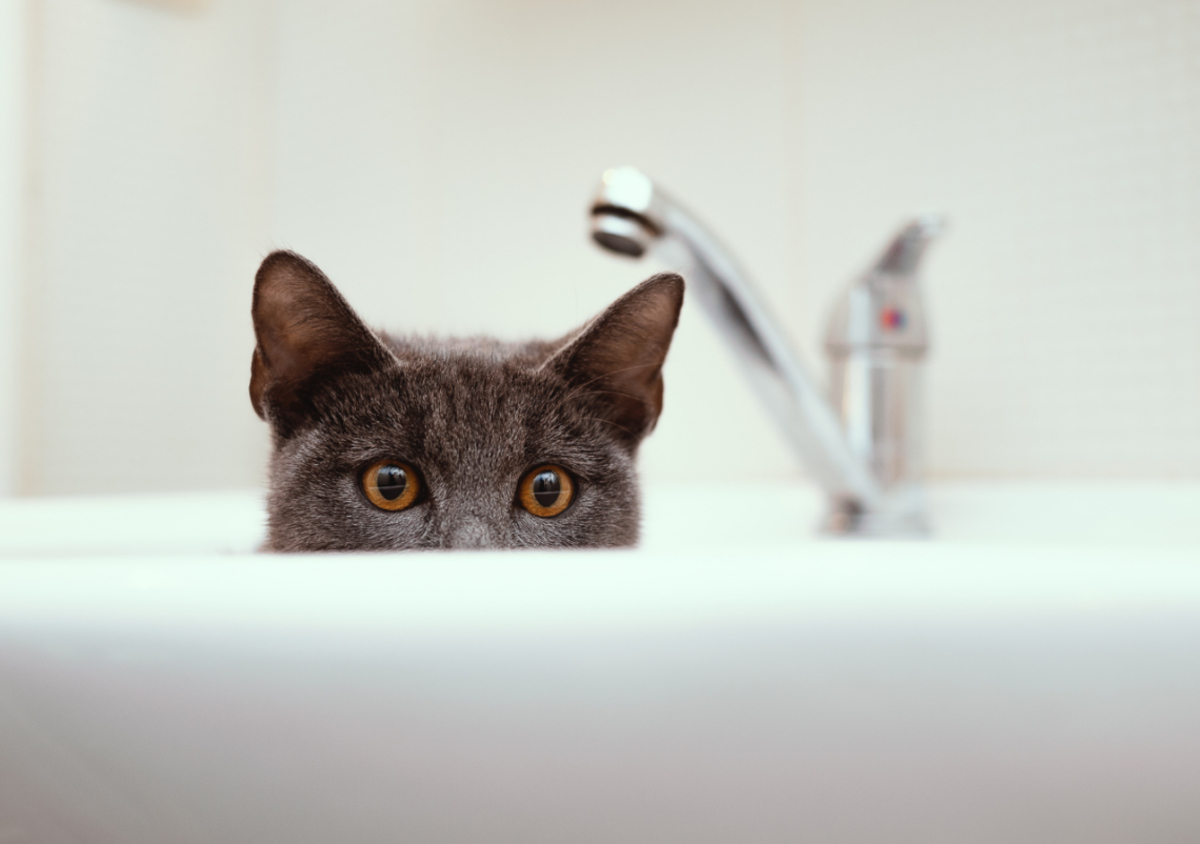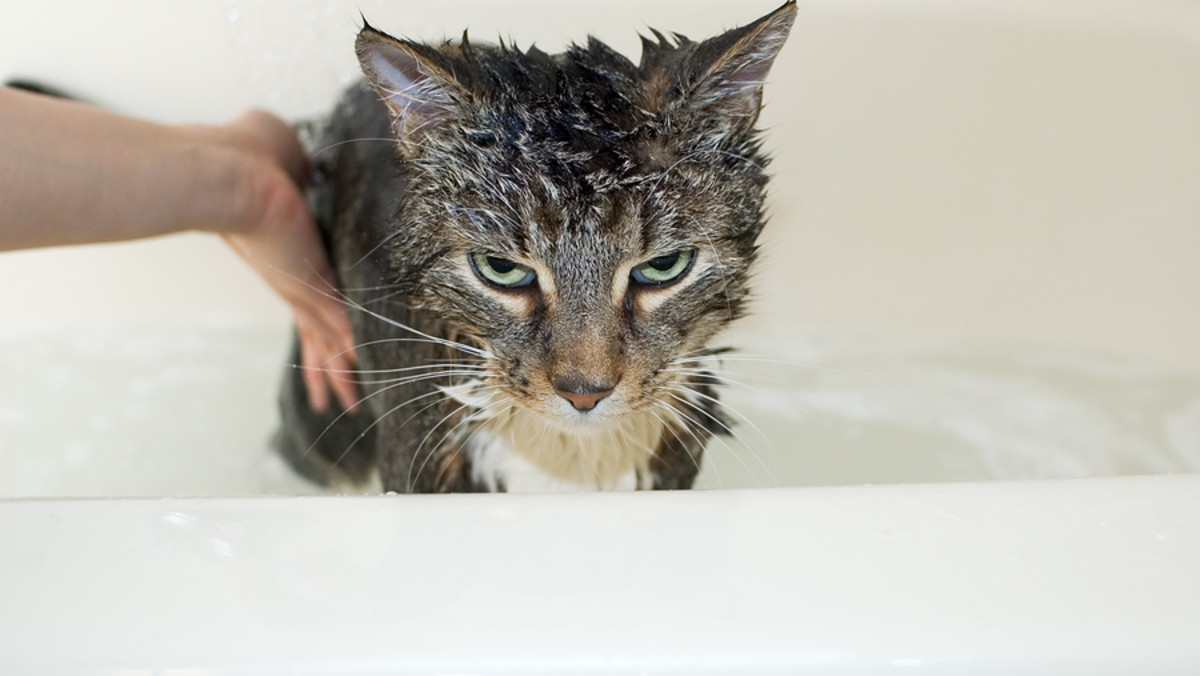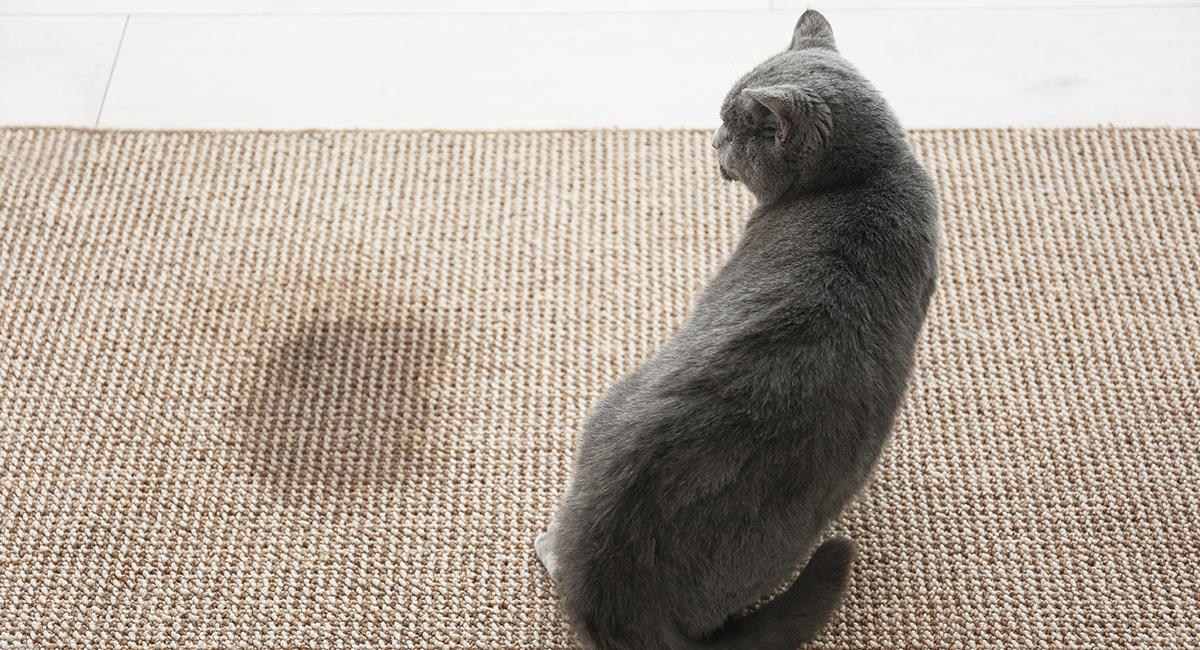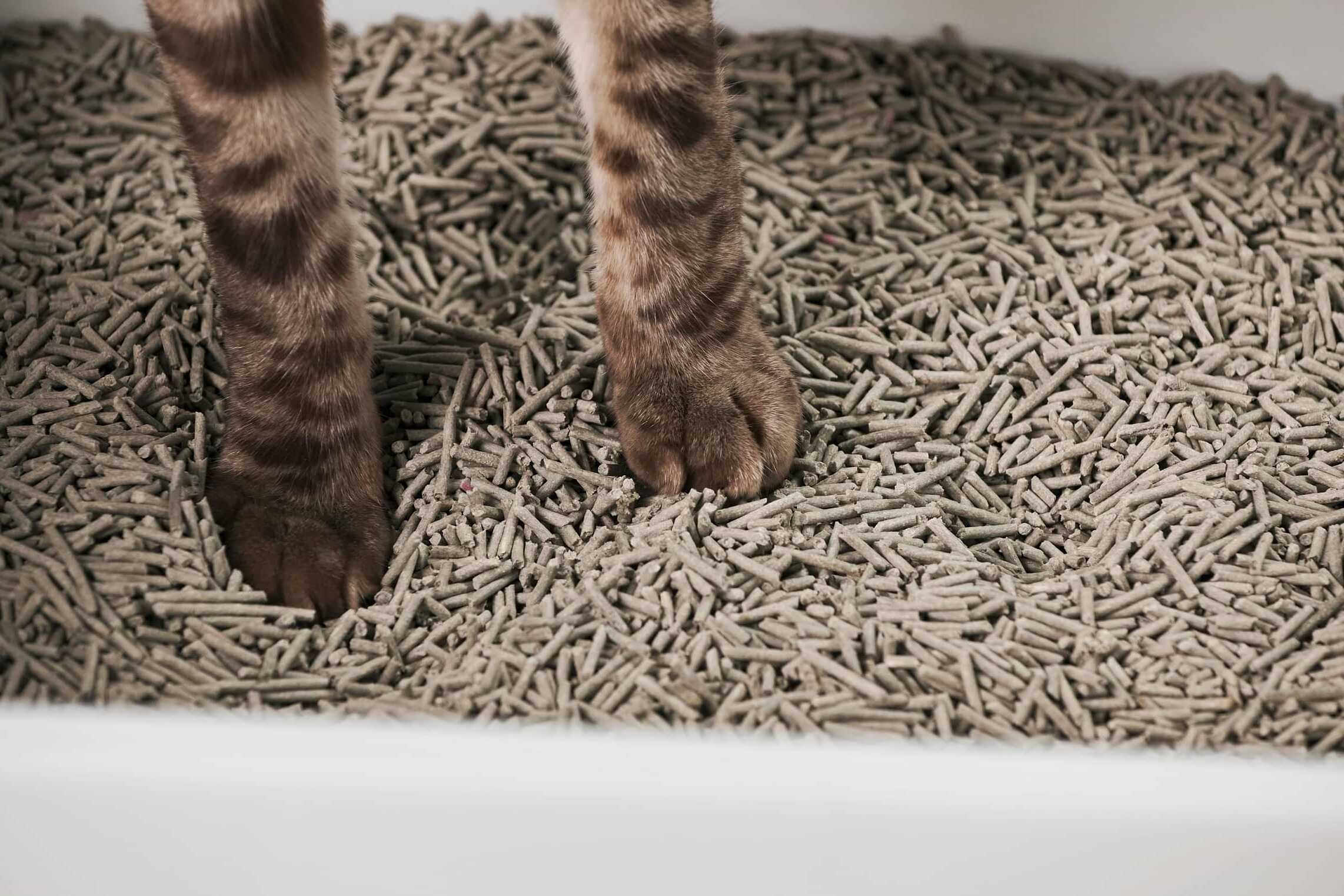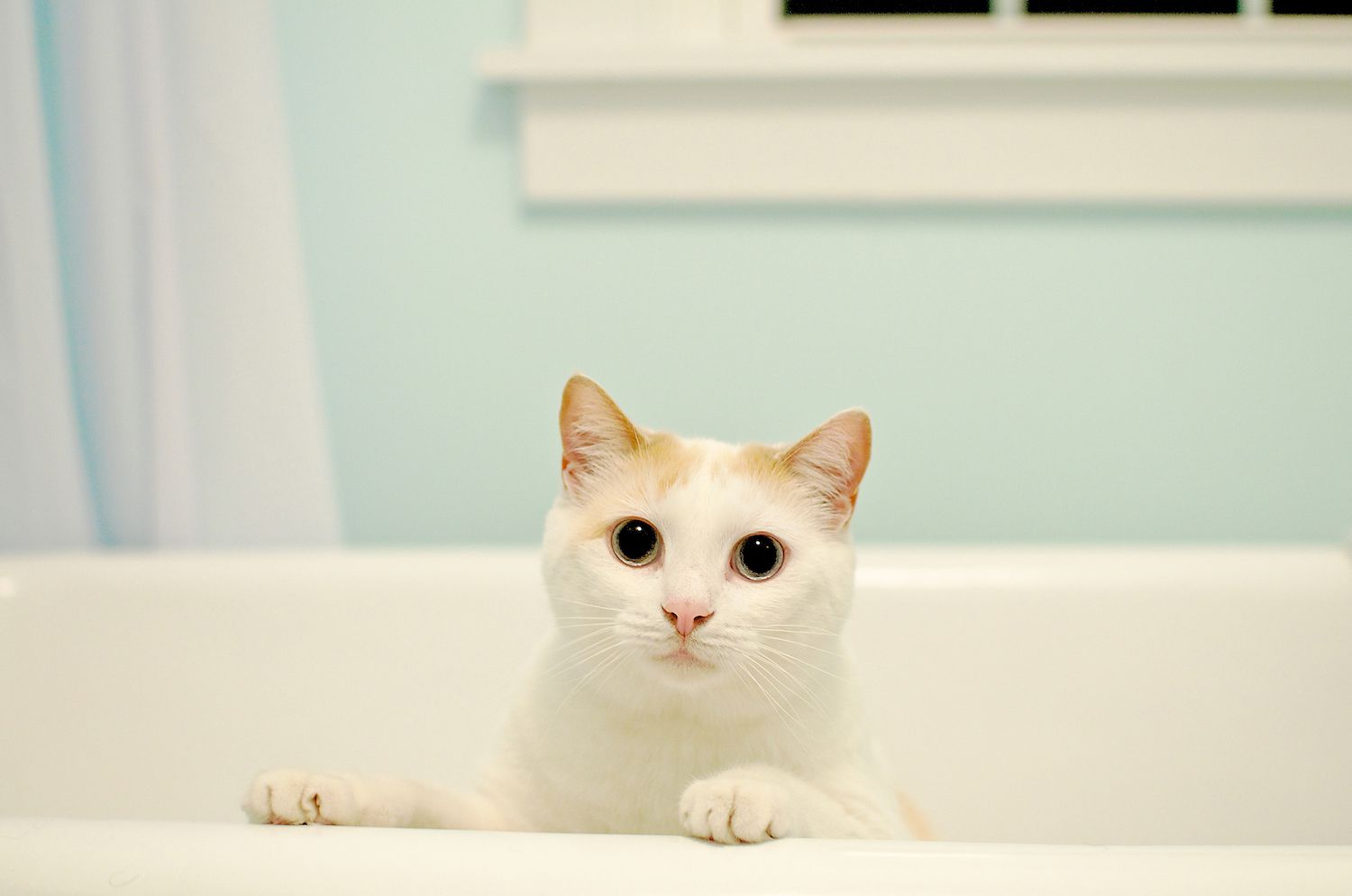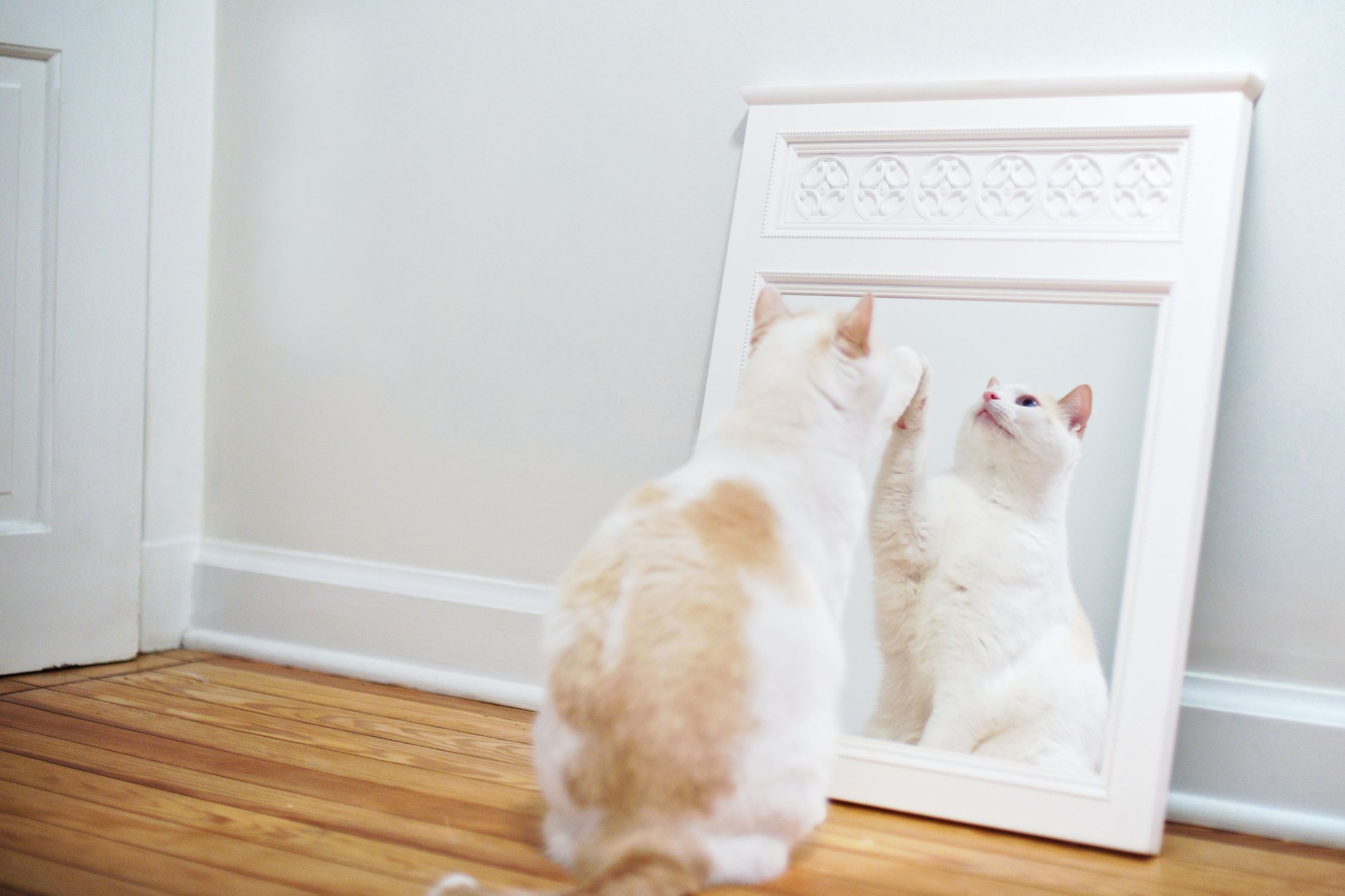Home>Furniture>Bedroom Furniture>Why Does My Cat Sleep In My Bed
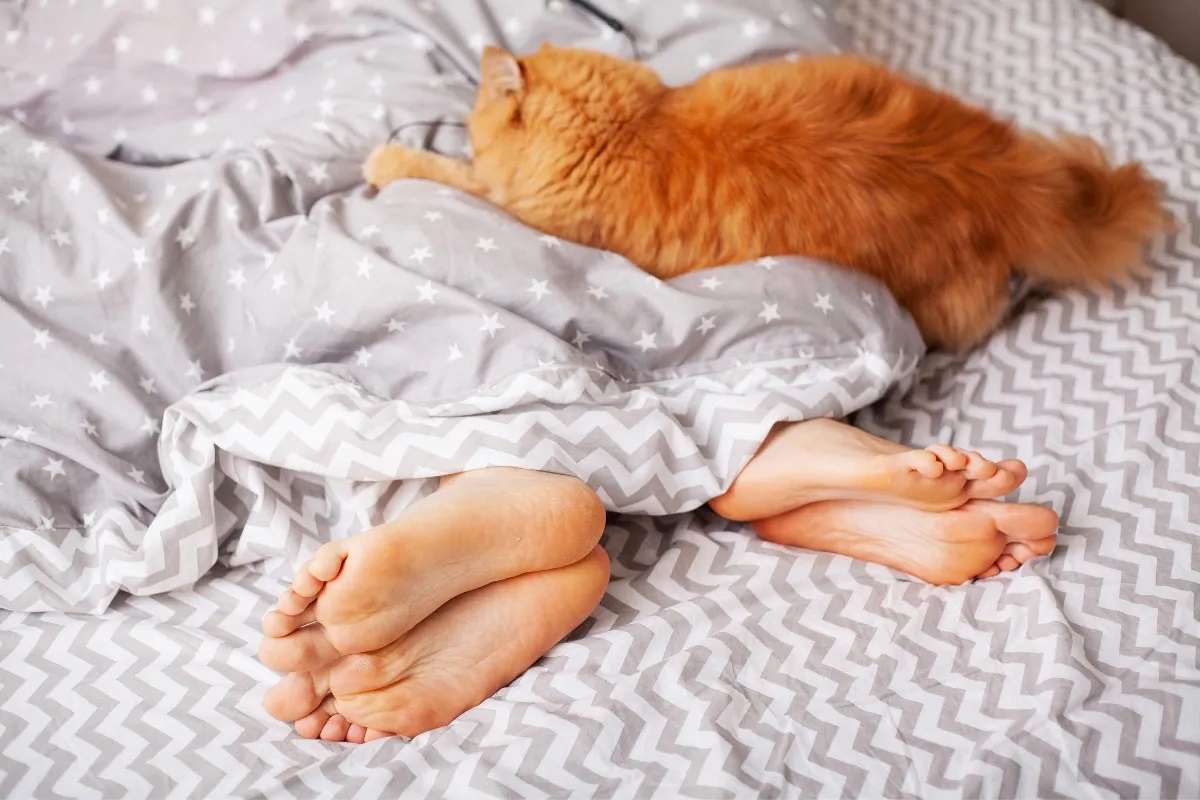

Bedroom Furniture
Why Does My Cat Sleep In My Bed
Modified: January 6, 2024
Discover why your cat loves sleeping in your bed and how to create a cozy bedroom environment with the right bedroom furniture for your feline friend.
(Many of the links in this article redirect to a specific reviewed product. Your purchase of these products through affiliate links helps to generate commission for Storables.com, at no extra cost. Learn more)
Introduction
Is there anything more comforting than curling up in bed, ready for a peaceful night’s sleep, only to find your feline friend nestled right next to you? If you’re a cat owner, chances are you’ve experienced this phenomenon at least once. But why do cats choose to sleep in our beds? In this article, we’ll explore the various reasons behind this behavior.
Cats have been domesticated for thousands of years, but their deep-rooted instincts and behaviors remain intact. While not all cats choose to sleep in their human’s bed, many find the softness and warmth of our sleeping quarters irresistible. Let’s dive into some of the factors that might explain why your cat seeks out your bed as their preferred sleeping spot.
Key Takeaways:
- Cats choose to sleep in our beds for comfort, security, and to strengthen their bond with us. Our beds provide warmth, familiarity, and a sense of belonging, creating a sanctuary for our feline friends.
- By understanding why cats prefer our beds, we can accommodate their needs, reinforce their trust, and create a harmonious living environment. Providing cozy spaces and respecting their boundaries fosters a loving relationship between cats and humans.
Read more: Why Does My Cat Sleep In The Litter Box?
Comfort and Security
One of the main reasons why cats choose to sleep in our beds is the comfort and security it provides. Beds typically offer a soft and cozy surface that beats sleeping on the cold, hard floor. The mattress and bedding create a comfortable nest-like environment that mimics the feeling of being nestled in a safe and warm spot.
Cats are known for being creatures of comfort. They seek out soft and plush surfaces to relax and sleep, and what better place to find that than in the human’s bed? Our beds are often equipped with fluffy pillows, warm blankets, and even heated pads, providing the ultimate comfort experience for our feline friends.
Additionally, sleeping in our beds allows cats to feel safe and secure. They are surrounded by familiar scents and the presence of their beloved human, which helps reduce anxiety and stress. Our beds offer a sanctuary where cats can retreat to when they want to feel protected and at ease.
It’s important to note that cats are highly sensitive to their environment, and any changes in their surroundings can be unsettling. If you’ve recently rearranged furniture or introduced new items to your bedroom, your cat may seek out your bed as a way to cope with the unfamiliarity and maintain a sense of security.
All in all, the comfort and security provided by our beds make them an irresistible choice for cats seeking a peaceful and relaxing sleep.
Bonding and Affection
Cats are social animals, and despite their reputation for independence, they form strong bonds with their human companions. Sleeping in our beds is a way for cats to feel a deeper sense of connection and togetherness with us, strengthening the bond of affection.
When a cat sleeps in your bed, they are essentially sharing your personal space and allowing themselves to be vulnerable in your presence. This act demonstrates trust and a desire to be close to you. It’s their way of saying, “You are important to me, and I want to be near you.”
Furthermore, sleeping together reinforces the bond between cat and owner through physical contact. Cats are tactile creatures, and they enjoy the warmth and comfort of snuggling up against their human. The act of cuddling and feeling the rhythm of each other’s breathing can create a sense of comfort and security for both parties involved.
By sharing your bed, cats also have the opportunity to engage in grooming behaviors. It’s not uncommon for a cat to groom themselves or their human companion before settling down to sleep. This mutual grooming helps create a sense of intimacy and strengthens the bond between cat and owner.
In essence, by choosing to sleep in our beds, cats are seeking not only physical comfort but also emotional closeness and affection. It’s their way of deepening the bond and solidifying the connection they have with their human companions.
Territory and Ownership
Cats are territorial creatures by nature, and they have a strong need to establish and mark their territory. By sleeping in your bed, cats are essentially claiming ownership over that space and declaring it as a part of their territory.
When cats sleep in our beds, they leave behind their scent through pheromones released from their sweat glands. This scent marking is a way for cats to communicate and establish their presence. It serves as a signal to other animals, both inside and outside the household, that this territory is occupied.
Additionally, our beds are often considered prime real estate for cats. In the wild, high and elevated spots provide cats with a vantage point where they can observe their surroundings and feel safe. Our beds offer a similar advantage, as they are typically elevated and provide a clear view of the immediate environment.
Furthermore, sleeping in our beds allows cats to claim a special and intimate space within the household. Since bedrooms are often considered private areas, sharing your bed with your cat can be seen as a sign of trust and acceptance. It’s their way of saying, “This is my territory, and I belong here with you.”
It’s important to keep in mind that while sharing your bed with your cat can be comforting and enjoyable, it’s essential to establish boundaries and provide alternative sleeping areas. Cats may become territorial and possessive over the bed, leading to potential conflicts and disruptions in your sleep. Providing your cat with their own comfortable bed or designated sleeping spots can help maintain a harmonious coexistence.
In summary, cats choose to sleep in our beds as a way to mark their territory and establish ownership over a cherished and intimate space within the household.
Temperature Regulation
Cats are highly sensitive to temperature and have a natural instinct to seek out warm and cozy places for rest. Our beds often provide the perfect environment for cats to regulate their body temperature and stay comfortable.
During colder months or in homes with air conditioning, our beds offer a warm haven for cats to curl up and conserve body heat. The soft blankets and bedding trap warmth, creating a cozy and snug environment for them to sleep in.
On the other hand, during warmer weather, cats may seek out our beds because they are cooler than other areas of the house. Mattresses and sheets tend to retain a more comfortable temperature, allowing cats to escape the heat and find relief from high temperatures.
It’s important to note that cats have a higher body temperature than humans, typically ranging from 100-102.5°F (37-39°C). By sleeping in our beds, cats can regulate their body temperature more easily, as the bedding materials absorb and distribute heat accordingly.
In addition to temperature regulation, cats are also adept at finding the perfect balance of warmth and airflow. They may strategically position themselves on the bed, taking advantage of air-conditioning vents or open windows to stay cool or get a gentle breeze while resting.
Overall, our beds provide an ideal environment for cats to regulate their body temperature. By curling up in our beds, they can stay warm or cool as needed, ensuring their comfort and well-being.
Create a comfortable and safe sleeping space for your cat in another area of the house, such as a cozy bed or blanket, to encourage them to sleep there instead of in your bed.
Read more: Why Does My Cat Pee On My Bed
Sleep Patterns
Cats are known for their unique sleep patterns. They are crepuscular animals, meaning they are most active during dawn and dusk and tend to sleep for long periods throughout the day and night. Sleeping in our beds aligns with their natural sleep patterns and allows them to rest comfortably.
By sharing our beds, cats have the opportunity to synchronize their sleep patterns with ours. Cats are observant and quickly pick up on our daily routines. They learn when we go to bed and wake up, and they might adjust their own sleep schedule to match ours.
Additionally, cats are social sleepers and enjoy the company of their human companions during slumber. Sharing the bed allows them to be close to us and feel a sense of connection even while they are sleeping.
It’s not uncommon for cats to exhibit different sleep behaviors in our beds. They may alternate between short naps and longer stretches of deep sleep, taking advantage of the comfort and safety provided by the bed. Cats may also engage in kneading, purring, and stretching while they sleep, displaying contentment and relaxation.
Furthermore, the rhythmic movements and sounds of our breathing and heartbeats can have a soothing effect on cats, contributing to a more restful sleep experience. The sense of security and companionship offered by sleeping in our beds can help cats feel more at ease and potentially improve the quality of their sleep.
However, it’s important to note that disruptions in our sleep patterns, such as tossing and turning or snoring, can also impact our cats’ sleep quality. It’s crucial to create a sleep environment that is comfortable and conducive to both human and feline sleep.
In summary, sharing our beds enables cats to synchronize their sleep patterns with ours, enjoy a sense of companionship, and experience a restful sleep that aligns with their natural instincts.
Scent and Familiarity
Cats have a keen sense of smell and use scent as a way to navigate and understand their surroundings. When a cat chooses to sleep in our beds, they are drawn to the familiar scents that we emit as their beloved humans.
Cats have scent glands located on various parts of their bodies, such as their cheeks, forehead, and paws. These glands release pheromones that carry unique scents, serving as a form of communication and leaving a mark of familiarity.
When a cat sleeps in our beds, they transfer their own scent and pick up our scent as well. This exchange of scents creates a sense of belonging and reinforces the bond between cat and owner. It’s a way for cats to feel connected to us and establish their place within the shared space.
Additionally, our beds often carry the scent of our daily activities and personal belongings. Cats may find comfort in the familiar smells of our laundry detergents, body lotions, and even the residual scents from the food we consume. Our beds become an extension of our own scent, offering a sense of security and familiarity for our feline companions.
Furthermore, sleeping in our beds allows cats to immerse themselves in our personal space. They can curl up in our pillows or nestle into the crevices of our blankets, enveloping themselves in the scents that are uniquely associated with us. This creates a comforting and reassuring environment for cats, as they are surrounded by the essence of their trusted human.
In summary, cats are attracted to the familiar scents we emit as their owners. By sleeping in our beds, they can both leave their own scent and be surrounded by our scent, creating a sense of belonging, comfort, and familiarity.
Attention and Companionship
Cats are social animals that crave attention and companionship, even when it comes to their sleep. Choosing to sleep in our beds allows them to be in close proximity to their beloved humans, ensuring that they receive the attention and companionship they desire.
When cats sleep in our beds, they feel a sense of inclusion and belonging within the family unit. As social sleepers, they enjoy the comfort and security of being near their human companions. This proximity allows for moments of interaction and bonding, even while both parties are in a relaxed and sleepy state.
Sharing the bed with our cats also provides an opportunity for physical closeness and affection. Cats may nuzzle, purr, or gently paw at us while we sleep, seeking attention and seeking to maintain a connection. These gestures are their way of expressing their love and ensuring that they are not forgotten even during the downtime of sleep.
Furthermore, sleeping together allows for shared experiences and moments of contentment. Waking up to the sight of a peacefully sleeping cat can bring a sense of joy and warmth to our mornings. Likewise, the rhythmic sound of a cat’s purring can have a soothing and calming effect on our own sleep, promoting relaxation and a sense of companionship.
It’s important to note that while many cats enjoy sleeping in our beds, some may prefer their own space or have individual preferences for where they sleep. Every cat is unique, and it’s crucial to respect their boundaries and provide alternative sleeping areas if needed.
In summary, choosing to sleep in our beds allows cats to receive the attention, companionship, and physical closeness they seek. It fosters a sense of inclusion within the family unit and creates opportunities for bonding and shared moments of contentment.
Reinforcement and Encouragement
Another reason why cats choose to sleep in our beds is the reinforcement and encouragement they receive from us. Cats are highly perceptive creatures and quickly learn that sleeping in our beds is a behavior that is rewarded with attention, affection, and a cozy sleeping environment.
When cats first start curling up in our beds, we may respond with petting, cuddling, and praise. This positive reinforcement teaches them that sleeping in our beds is a desirable behavior and encourages them to continue seeking out our beds as their preferred sleeping spot.
Additionally, cats are creatures of habit and routine. If they find comfort and relaxation in a specific sleeping location, such as our beds, they are more likely to return to that spot repeatedly. The reinforcement of a comfortable and enjoyable sleeping experience further reinforces the behavior of sleeping in our beds.
Furthermore, the attention and affection that we provide when cats sleep in our beds contribute to their overall well-being and happiness. Cats enjoy being near their human companions, and when they receive love and attention while they sleep, it enhances their sense of security and strengthens the bond between cat and owner.
It’s worthy to note that some cats may use their presence in our beds as a way to gain attention during the night. They may jump onto the bed, paw at us, or use vocalization to wake us up. While this behavior can be disruptive to our sleep, it’s important to respond appropriately. Ignoring the behavior or redirecting their attention to an alternative sleeping area can help establish boundaries and discourage unwanted behaviors.
In summary, cats are reinforced and encouraged to sleep in our beds through the positive attention, affection, and comfort they receive. The rewards they experience serve as a motivation for them to continue seeking out our beds as their preferred sleeping spot.
Read more: Why Do Cats Sleep At The Foot Of The Bed
Conclusion
The choice of cats to sleep in our beds is influenced by a combination of factors, including comfort, security, bonding, scent, and reinforcement. Our beds offer the perfect blend of warmth, softness, and familiarity that cats seek for a restful sleep experience. The scent of our belongings and the shared space create a sense of belonging and security for our feline friends.
Furthermore, sleeping in our beds allows cats to strengthen their bond with us, as they enjoy the proximity, attention, and physical closeness that comes with sharing the sleeping space. Our beds become a sanctuary where cats feel connected and loved, and where they can seek solace in our presence.
It is important to remember that while many cats enjoy sleeping in our beds, it is not the case for all felines. Each cat has its own preferences and individual needs, and it’s essential to respect their boundaries and provide alternative sleeping areas if necessary.
By understanding the reasons behind their choice to sleep in our beds, we can better accommodate and facilitate their comfort and happiness. Creating a cozy and inviting space, establishing boundaries, and offering alternative sleeping options can provide a harmonious living environment for both cats and humans.
So the next time you find your cat curled up in your bed, take a moment to appreciate the bond and trust that they have placed in you. Enjoy the warmth, companionship, and love that comes with sharing your sleeping space with your feline companion.
Frequently Asked Questions about Why Does My Cat Sleep In My Bed
Was this page helpful?
At Storables.com, we guarantee accurate and reliable information. Our content, validated by Expert Board Contributors, is crafted following stringent Editorial Policies. We're committed to providing you with well-researched, expert-backed insights for all your informational needs.


